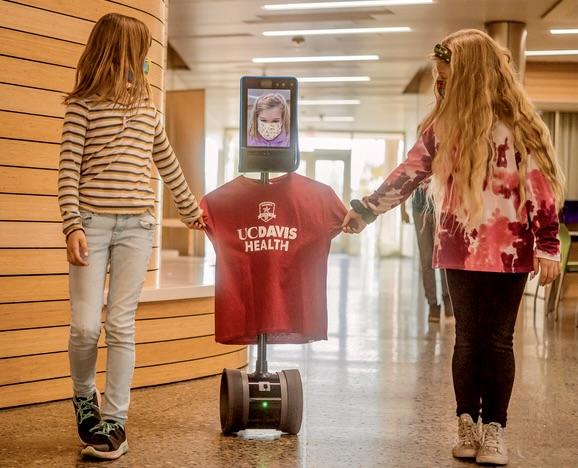Puffins: Exploring how narrative, data science, and artificial intelligence enhance the study of ecology in middle school
The study of puffins can provide a fascinating subject area for the integrated learning of data and ecosystems. Once hunted to local extinction, puffins have made a dramatic yet fragile comeback and been re-established to historic nesting islands in mid-coast Maine. This project combines a scientific adventure story about puffin restoration with student-directed data investigations about the relationships between puffin health and environmental factors.
Embodied Interactive Environment for Advancing Data Sensing and Computational Thinking Skills in the Built Environment
As the construction industry gears toward adopting data sensing technologies, there is a demand for creating and sustaining a workforce with skills for implementing the technologies and analyzing the resulting data to support decision-making. It is also essential to improve awareness of this Science, Technology, Engineering, and Mathematics (STEM) career option among all K-12 students, develop their understanding of the applications of data sensing technologies and improve their computational thinking skills in manipulating and using data.
Integrating AI Machine Learning into the Teaching of Paleontology Using Fossil Shark Teeth in Middle Schools
Sharks have ruled the Earth’s oceans for 400 million years, leaving behind a widespread fossil record. Inspired by the extinct 65-foot-long predator Megalodon, fossil shark teeth can spark student interest and curiosity in STEM (Science, Technology, Engineering, and Mathematics). Machine Learning (ML), a branch of Artificial Intelligence (AI), is used in a variety of fields today and is broadly applicable for developing predictive models that drive research and development.
Integrating AI Learning into Middle School Science through Natural Language Processing
This project responds to the growing recognition that learners of all ages should have the opportunity to engage with and learn about artificial intelligence (AI). Of AI's many subfields, natural language processing (NLP) is one of the fastest growing. NLP focuses on how to automatically understand spoken or textual data, and billions of these textual or spoken exchanges are recorded online every day.
Co-Robots to Enhance Motivation and Self-efficacy in Formal STEM Education
Rehabilitation and assistive robots are becoming more prevalent as the population is aging. Healthcare technologies are rapidly evolving and becoming increasingly high-tech and reliant on sensors for biological data collection and human-robot interactions to augment human capabilities. Not only is the field changing, but the demand for a highly skilled workforce is growing rapidly.
A Workshop to Synthesize Findings from Education Research Conducted During the Pandemic: Emerging Lessons From COVID-19
This project will host a workshop in order to identify and synthesize research findings from NSF awards that addressed the unanticipated effects of the COVID-19 pandemic on STEM teaching and learning. The interruptions from the pandemic had dramatic, widespread effects in education. Across the nation, teachers, students, parents, staff, and school administrators experienced extended school closures and a rapid and unexpected shift to virtual instruction.
Preparing Secondary Teachers and Students for Quantum Information Science
Quantum information science (QIS) is imperative to economic and national security, commerce, and technology. Development of a "quantum smart" workforce needs to begin before college. The logical venue for exposure to quantum might be a physics course, but numerous K-12 students attend schools where physics is not offered. Since most students will not major in physics, it is vital to expose K-12 students to quantum concepts that are relevant to everyday experiences with credit card security, phones, computers, and basic technology.
Robot-Mediated Learning: Exploring School-Deployed Collaborative Robots for Homebound Children

Over 2.5 million children in the US are medically homebound. They are socially isolated, physically segregated, and current educational practices largely exclude them from their school communities. Telepresence robots have emerged as a possible means to support these children to return to their local schools, however, it is not yet understood how homebound children can effectively use these robots for optimal learning and social development experiences.